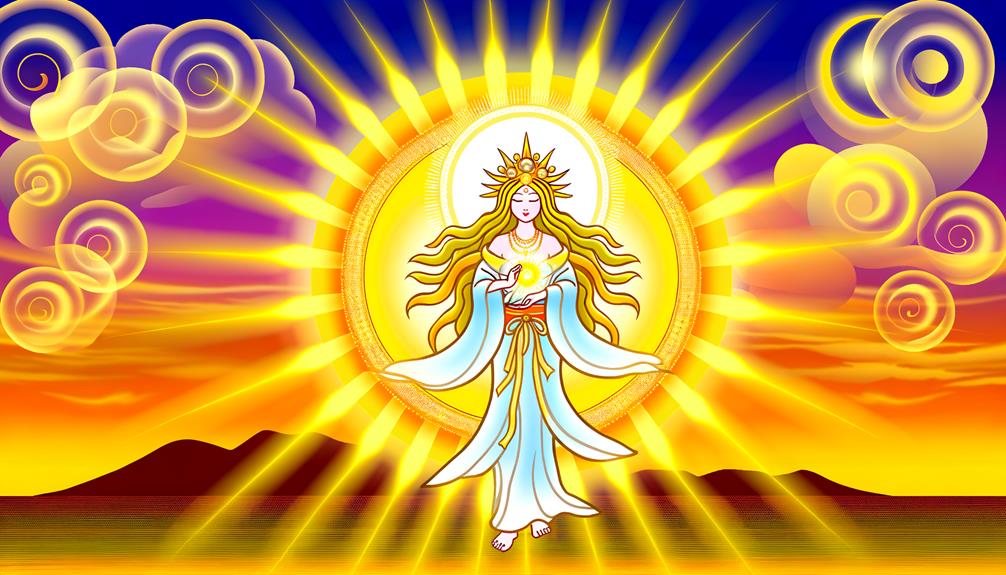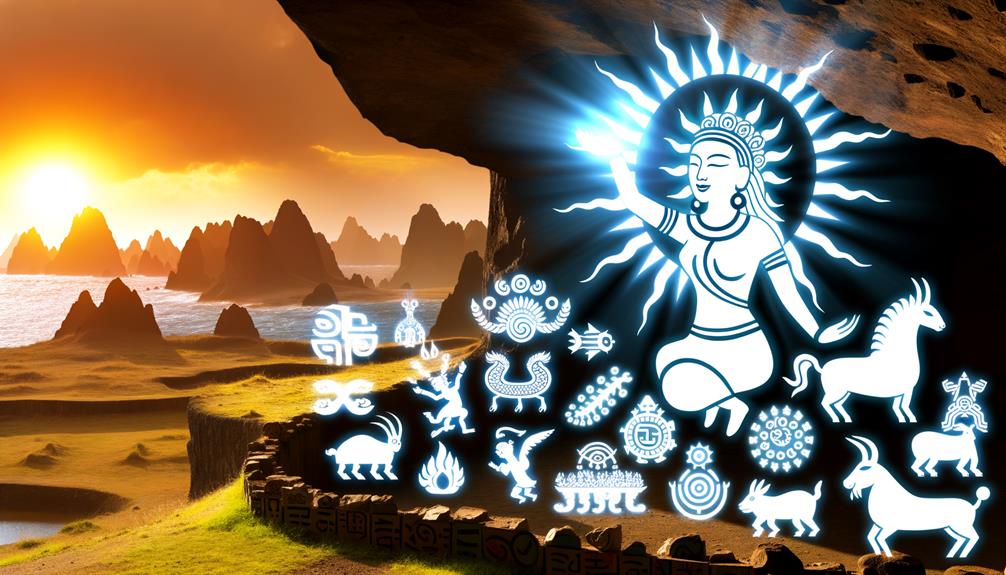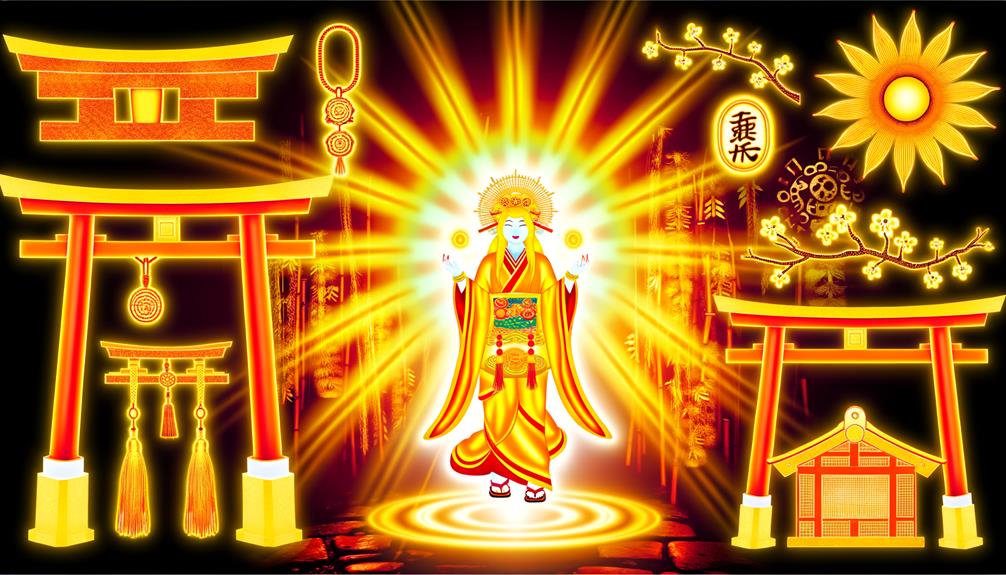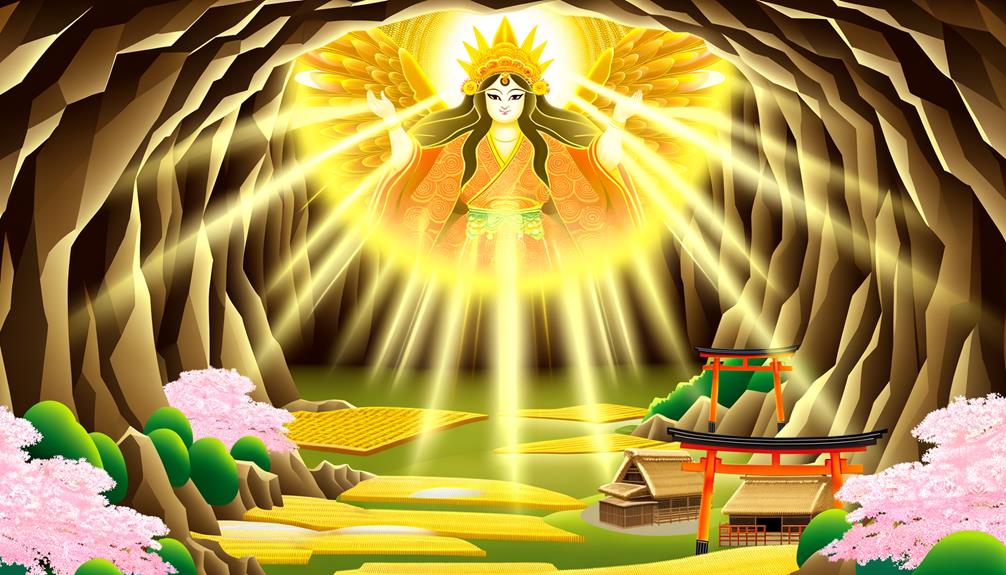Let's take a step back in time, to the intriguing world of ancient myths and legends. There, we find the radiant Amaterasu, a sun goddess revered in Japan's Shinto tradition. Her stories have always had a certain charm for me, with their unique mix of divine and human elements.
Amaterasu is more than just the embodiment of the sun. Her stories echo her impact on the daily lives, culture, and history of the Japanese people. There's also an added dash of intrigue to her character, as she's considered the ancestral deity of the Japanese royal family. This detail adds depth to her character and increases her importance within the Shinto divine hierarchy.
But what really makes Amaterasu's stories stand out are the subtle details. These are the elements that make us stop and think, analyze, and appreciate. They're not about grandeur, but about the understated beauty of the narrative. So, are you ready to step into the bright and fascinating world of Amaterasu?
Birth and Early Life of Amaterasu

Let's get into the intriguing stories from the world of Shintoism. A tale that really stands out is that of Amaterasu Ōmikami, the respected sun goddess. A remarkable part of her story is that she was born from the left eye of the god Izanagi. This unique birth story positioned her as a shining beacon of life and order in early Japanese mythology.
The history and cultural implications of Amaterasu's birth are not to be underestimated. As the sun goddess, she represents the life-giving properties of the sun, a key element for farming and fertility. Her role in the Japanese pantheon is truly impressive. She's recognized as the ancestor of the Imperial family, which means the family's claim to rule is rooted in this divine lineage. This cleverly weaves together the spiritual and political realms.
The tales of Amaterasu's encounters with her brother, the storm god Susanoo, add depth to her story. There's a popular tale where, after Susanoo threw a fit, she retreated into a cave. This caused the world to be engulfed by darkness. This event highlights her critical role in upholding cosmic order and solidifies her respected position in Japanese mythology.
Amaterasu's Divine Powers

Let's take a closer look at Amaterasu, a figure deeply revered in the world of Shintoism. She's known for her divine powers that symbolize creation and the rising sun, which underscores her crucial role as the Queen of Heaven. She also keeps the balance in nature and human societies. Amaterasu means 'shining in heaven,' which firmly places her among the sun deities.
What's worth noting is the societal impact of Amaterasu's divine powers. The Japanese Imperial Family considers her as their divine ancestor, which lends an air of sanctity and legitimacy to their leadership. The Ise Grand Shrine, a popular place for Shinto worship, offers special reverence to her.
If you're looking to understand the extent of Amaterasu's powers, here are some important points to remember:
- Amaterasu is the embodiment of the rising sun and creation, a testament to her boundless life force.
- As a deity, she ensures there's harmony between nature and society.
- The Japanese Imperial Family holds Amaterasu in high esteem as their divine ancestor.
- The Ise Grand Shrine, where she's primarily worshipped, underlines her societal significance.
- The stories about Amaterasu, including those of reconciliation, seclusion, and kingdom formation, show her wisdom and fairness.
All in all, the divine powers of Amaterasu hold deep significance on spiritual and societal levels, impacting and shaping both realms in profound ways.
Notable Myths and Legends

Are you ready to dive into the captivating world of Japanese mythology? If so, we'll be focusing on the tales of Amaterasu, often dubbed as the Queen of Heaven. Her stories have left an indelible mark on Japanese cultural history and mythology.
One of the most well-known tales about Amaterasu revolves around her infamous feud with her brother, Susanoo, the storm god. The story goes that after a particularly nasty spat, Amaterasu took refuge in the Heavenly Rock Cave. As a result, darkness enveloped the world. To bring her out, the goddess Amenouzume danced, causing a roar of laughter among the gods. Curious, Amaterasu peeked out, and the mirror Yata-no-Kagami was used to draw her out fully, bringing light back to the world. This influential tale, chronicled in the Nihon Shoki, plays a significant role in the Shinto religion.
The Ise Shrine, a dedicated space for Amaterasu, is also the place where the Imperial Regalia, including the Yata-no-Kagami, is kept. This mirror, along with a jewel and a sword, were given to Ninigi, Amaterasu's grandson. This noteworthy event marked the inception of the Imperial lineage. These three items symbolize the three deities of Shinto and play a crucial role in the coronation rituals of the Imperial family. Hence, it's safe to say that Amaterasu's myths and legends are intrinsically linked to the political and cultural history of Japan.
Influence on Shinto Religion

Amaterasu, with her high regard, naturally has a deep impact on the Shinto religion, helping mold its customs, rites, and legends. The Grand Shrine of Ise, viewed as the pinnacle among Shinto shrines in Japan, is a tribute to Amaterasu, showcasing her considerable impact on the faith.
Here are some examples of how her influence is seen:
- The sacred mirror, a keepsake from Amaterasu to her grandson Ninigi, is kept at the Grand Shrine of Ise. This underscores her divine power.
- The Amanoiwato Shrine is a notable place of worship. This is where Amaterasu reportedly hid in the Heavenly Rock Cave.
- Amaterasu is one of three goddesses who soothed the Gathering Clouds. This myth underscores her role in promoting balance.
- She is deemed the founder of the Japanese imperial family and is respected as the spiritual pillar of Japanese society.
- The story involving Amaterasu and her brother Susanoo imparts valuable lessons about modesty and making amends.
It's clear that Amaterasu's influence on the Shinto religion doesn't stop at myths. It's woven into the cultural and spiritual life of Japan.
Amaterasu's Cultural Impact

Let's take a closer look at how a key figure from Japanese mythology, Amaterasu, has left a lasting impression on Japan's culture. This sun goddess' influence extends from beliefs and practices in religion to folklore, art, and even the political structure of the nation. Her association with the country's imperial court and her central role in Shintoism are the roots of her cultural impact.
The story of Amaterasu and her brother, Susanoo, a moon deity, is something to note. In this tale, Susanoo's wild antics led to Amaterasu seeking refuge in a cave, which plunged the world into darkness. The other gods managed to coax her out of hiding, using a mirror and a jeweled necklace, one of the 'Three Sacred Treasures'. Seeing her own reflection, she thought another goddess had taken her spot, which led her to emerge from the cave, restoring sunlight to the world.
This tale emphasizes Amaterasu's position as a sun goddess and protector of Japan. It has had a profound influence on the nation's art, folklore, and religious customs. The mirror and the jeweled necklace she was enticed with have become symbols of imperial power, further linking her with the imperial family. Amaterasu's long-standing legacy still influences Japan's political and social structures, which demonstrates her continuous impact on Japanese society.
Frequently Asked Questions
What Is the Story of the Sun Goddess Amaterasu?
In the world of Shinto legends, there is a tale about Amaterasu, the goddess of the sun. This story goes that she was born from the eye of Izanagi, a significant god. There's a part in her tale where she hides away in a cave and the world is enveloped in darkness. Luckily, she's coaxed out, bringing light back into the world. Amaterasu isn't just an ordinary deity – she's a pivotal character in the lineage of the Japanese imperial family!
What Is the Story of the Sun Goddess Amaterasu Disappearing Into the Cave?
Let's chat about the story of Amaterasu, the sun goddess from Shinto mythology, and that time she vanished into a cave. It goes like this: Amaterasu was so upset with her brother Susanoo's antics that she decided to hide in a cave. The world was plunged into darkness as a result, scary right? But here's the good part – the gods threw a party so lively, so fun, that curiosity got the better of her. She peeked out of the cave, and voila, the light was restored! This tale is a fundamental part of Shinto teachings, symbolizing renewal and restoration. Isn't that fascinating?
What Type of Myth Is Amaterasu?
The story of Amaterasu is a classic example of an etiological myth, which serves to explain certain aspects of the natural world. In a nutshell, it's a captivating narrative that unravels the mystery of the sun's daily path. It offers a reason why the sun vanishes when darkness falls and then reemerges at dawn.
What Does the Amaterasu Do?
In the realm of Shintoism, Amaterasu shines brightly as the Goddess of the Sun. She's like the ultimate ray of sunshine, infusing life and order into our world. Picture her as a nurturing farmer, tending to the fields of fertility and agriculture. Plus, she's a total superhero, keeping harmony in nature and society. So, you can see why people hold her in such high regard.

